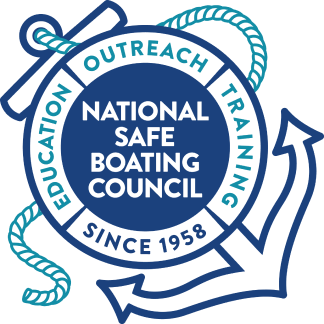Training FAQs
FAQs
What is the difference between a NSBC Instructor and a NSBC Instructor Trainer?
Both NSBC Instructor and NSBC Instructor Trainers can teach recreational boaters, marine law enforcement, youth and others the Boat Control On-Water Training curriculum. This curriculum is designed to teach boat handling skills, but is not a certification or licensing program.
Only NSBC Instructor Trainers can teach the National Safe Boating Council Instructor Certification course. Prior to teaching the course, the instructor candidate must be approved by the NSBC. Learn how to become a NSBC Instructor Candidate.
Do I need to pay annual membership dues?
Yes, to maintain your certification you must pay annual instructor membership dues to the NSBC.
How do I know if I’m a NSBC Instructor or NSBC Instructor Trainer?
If you are not sure if you are a NSBC Instructor or NSBC Instructor Trainer, you are a NSBC Instructor.
What are NSBC Instructors certified to teach?
NSBC Instructors are certified to teach one curriculum, Boat Control On-Water Training. This curriculum is taught in four modules designed to teach boat handling skills to recreational boaters or personnel hired to operate a vessel used in marine patrol. Each of the four course modules is approximately 3 hours long, but time length may vary depending on the age and boating experience of the student. The modules are 1) Introduction to Powerboating, 2) Precision Docking and Boat Handling, 3) Open Water Boat Handling, and 4) Open Water Advanced Maneuvers. A Certificate of Completion may be awarded for each module, but this is not a NSBC Instructor Certification course. Learn more.
What are NSBC Instructor Trainers certified to teach?
- National Safe Boating Council Instructor Certification. Only NSBC Instructor Trainers, with instructor candidates approved by the NSBC, may teach this course. This course is taught in a train-the-trainer model, progressing from close quarter maneuvers at idle speed, to maneuvers in displacement mode, and to advanced open water maneuvers. Upon successful completion of the course, the candidate becomes a NSBC Instructor certified to teach the Boat Control On-Water Training curriculum.
- Boat Control On-water Training. This course is taught in four modules designed to teach boat handling skills to recreational boaters or personnel hired to operate a vessel used in marine patrol. Each of the four course modules is approximately 3 hours long, but time length may vary depending on the age and boating experience of the student. The modules are 1) Introduction to Powerboating, 2) Precision Docking and Boat Handling, 3) Open Water Boat Handling, and 4) Open Water Advanced Maneuvers. A Certificate of Completion may be awarded for each module, but this is not a NSBC Instructor Certification curriculum. Learn more.
Does the NSBC on-water curriculum meet American National Standards for Power?
Yes, both the National Safe Boating Council Instructor Certification and Open Water Boat Control and Boat Control On-Water Training curricula meet the American National Standard for Power.
Do I have the latest NSBC Instructor binder?
The National Safe Boating Council Instructor Certification curriculum was revised to meet the standards in 2018. And, the Boat Control On-Water Training curriculum was written and third-party verified in 2018. The new binders contain both curricula. So, if your binder does not have both curricula, you are using outdated materials that do not meet the standards for power. Order a NSBC Instructor Binder.
Where can I find a course waiver for my students?
Every student participating must complete a waiver and release of liability prior to participating in the course. Make it easy by emailing the student digital waiver in advance. A hard copy of the form is in your Instructor Binder only if needed (however, these must be scanned and attached with the course report). Please note that the liability waiver covers the NSBC only, and coverage is not extended to NSBC Instructors or Instructor Trainers unless directly hired by the NSBC to conduct a scheduled course.
Do I need to file course reports?
After EACH course you teach, you must file a course report at safeboatingcouncil.org/training. Simply select Course Reports in the left column, and complete the required form. It’s helpful to view the form prior to the course to make sure you collect all the required information.
How do I order certificates for students who have successfully completed a course I taught?
After your students have successfully completed the course and you have filed a course report, you may issue course certificates. Shop NSBC to purchase personalized certificates for the specific course.
I did not teach courses in the past four years. What do I need to do?
You may need to take the certification course again, but the NSBC Executive Director can determine if you are eligible for a waiver to continue training.
Does the NSBC provide marketing materials and logos for my training website?
Yes. All NSBC Certified Instructors and Instructor Trainers may use the Boat Control On-Water Training Provider Kit.
How can I opt-in to have my name or business listed on the NSBC website as a course provider?
You must opt-in to have your name or business listed included in our Find an Instructor database. Complete the Find an Instructor Opt-In form. If you need to update your listing, please email training@safeboatingcouncil.org.
What safety gear do I need?
In addition to all required safety gear and always wearing a life jacket, we recommend all NSBC Instructors have a carbon monoxide detector. You will be idling in close quarters for long period and carbon monoxide may be present.



